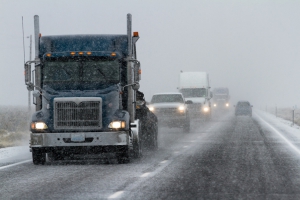 Change is inevitable in any industry. With improved technology rolling out on expedited timelines, companies have been able to innovate how they conduct business. For the trucking industry, autonomous vehicles loomed on the horizon as the next big thing to disrupt business as usual. However, the road to autonomous fleets is a long one and several hurdles line its path. One of the biggest is dealing with wintry weather.
Change is inevitable in any industry. With improved technology rolling out on expedited timelines, companies have been able to innovate how they conduct business. For the trucking industry, autonomous vehicles loomed on the horizon as the next big thing to disrupt business as usual. However, the road to autonomous fleets is a long one and several hurdles line its path. One of the biggest is dealing with wintry weather.
The Problem with Snow and Autonomous Fleets
While autonomous trucks represent progress and hold many promising possibilities for fleets, it can’t come at the cost of reduced safety. After all, one of the leading features of 100% autonomous vehicles is there improved safety over their semi-autonomous or driver-assisted counterparts. Unfortunately, no matter how much more processing power autonomous vehicles possess, there is still too much unpredictability when it comes to winter weather to make them a viable option just yet.
Out of the 5,891,000 auto accidents that occur on average each year, 1,235,000 relate to poor weather conditions such as snow, rain, sleet, and high-velocity winds. The cost of those accidents adds up to a hefty sum as well. Even when commercial drivers take precautions, severe weather is not something they can control. The problem persists for autonomous trucks as well.
Top Risks Autonomous Cars Encounter in Wintry Weather
When roads are wet with rain, slush, or a wintry mix, they become difficult to navigate for all vehicles. The following are the most concerning challenges autonomous vehicles face in poor weather conditions:
- Slippery roads. Autonomous vehicles can interpret speed limits and employ safe following distances without a problem. However, once roads become wet, the technology needs to adjust its speed and its following distance accordingly. This requires the vehicle to make decisions that are difficult for technology to enact without understanding the severity of the slippery conditions.
- Sensor failure. Some sensors fail to detect light rain or snow. Even if the technology is able to adjust for wet road conditions, it needs to be aware the condition exists in the first place to be effective.
- Standing water. Autonomous vehicles need to be able to detect puddles in their path as well as determine how deep they are and if they need to avoid them to prevent hydroplaning.
- Hydroplaning. If an autonomous truck fails to avoid hydroplaning, it needs to be able to rapidly choose the correct course of action to regain control without making the situation worse.
While the concept of autonomous fleets is a promising one, there are several safety challenges the technology needs to overcome before they become a reality. Contact the experts at DriverCheck to stay up to date with the latest safety technology and learn more about our safety solutions.